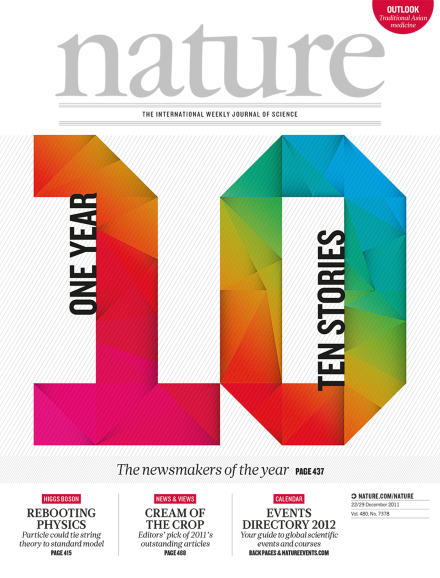Volume 480 Issue 7378, 22 December 2011
Editorial
World View
Research Highlights
Seven Days
News
Correction
News
News Feature
Comment
Books & Arts
Correspondence
Obituary
News & Views
Review Article
Article
Letter
Feature
Column
Futures
Outlook
-
Traditional Asian medicine
Nature Outlook:
-
TCM: Made in China
Nature Outlook:
-
Convergence: Where West meets East
Nature Outlook:
-
Perspective: All systems go
Nature Outlook:
-
Microbiome: That healthy gut feeling
Nature Outlook:
-
Modernization: One step at a time
Nature Outlook:
-
Modern TCM: Enter the clinic
Nature Outlook:
-
Japan: Will the sun set on Kampo?
Nature Outlook:
-
Perspective: Herbal dangers
Nature Outlook:
-
Regulations: Herbal medicine rule book
Nature Outlook:
-
Perspective: The clinical trial barriers
Nature Outlook:
-
Biodiversity: Endangered and in demand
Nature Outlook:

